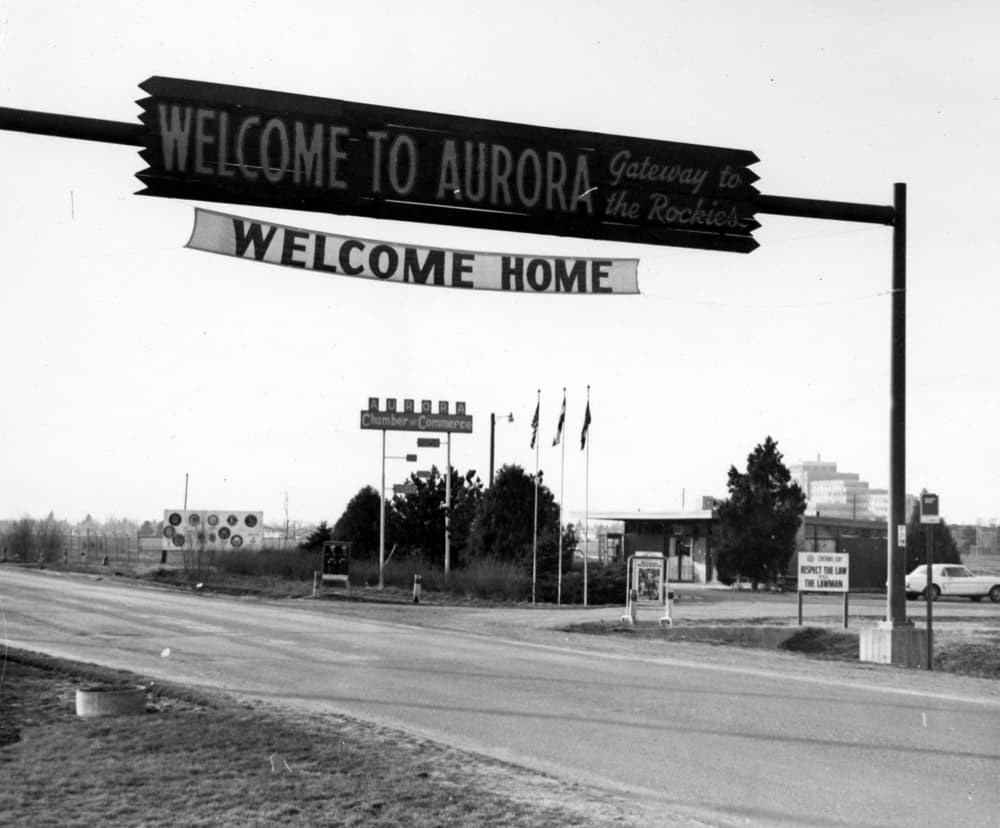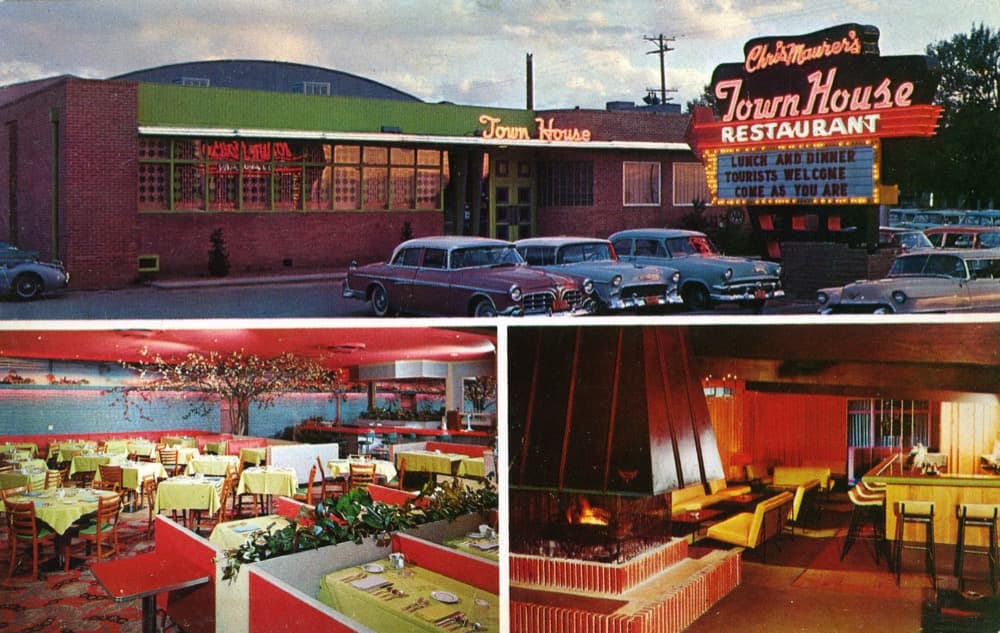
Once upon a time, a homey sign welcomed weary travelers to the Front Range.
"WELCOME TO AURORA" it declared in letters painted on jagged wooden boards stretching over Colfax Avenue. "Gateway to the Rockies."
The sign hung for nearly 25 years, until the Chamber of Commerce decided to replace it with a significantly less homey message. The wooden sign was covered over in 1983 with a metal message that declared Aurora was "The Bright Way," according to the city's history museum, which is hosting a new exhibit on the history of Colfax.
Anyway, I have no idea what "The Bright Way" means, and apparently neither did the general public. Even worse, the chamber had committed the mortal sin of public life: They had messed with a local legend. The sign was the handiwork of Billie Preston, who previously had mounted a successful campaign to keep her horse, Patches, in city limits.
A wave of protest rose up to save the sign, including letters to the mayor from school kids. No one won. Eventually, the whole sign came down -- another piece of Colfax history disappeared, along with many of its famed motels.
Today, its remnants remain in the archives of the city government's Aurora History Museum, which just opened a new exhibit on the history of Colfax Avenue.

"It's sad for me, some of these really cool places that are gone," said curator Jennifer Cronk. "You have the dramatic lines (of futuristic Googie architecture) and the signs -- the signs. I wish all these signs had been saved, because to have them all, light them all would be amazing."
Only pockets of old Colfax through Aurora survive, so Cronk did the next best thing. She combed through her own archives and those of the itinerant historian Jonny Barber to pull together a one-room exhibit at city hall.
The remnants of the old sign are not a part of the exhibit -- they're simply not in very good shape -- but Cronk has pulled together a series of displays following several historical threads, from the early "cottage camps" for travelers to the glitzy motels and eateries.
Much of Aurora's development happened alongside Colfax as it became a major auto route, with some of the first accounts of heavy tourism cropping up in the 1930s, Cronk said. The avenue was also a draw for the men of the city's military bases.
"This is where the men went to do anything. To be able to get some food or go out for a drink, they went to Colfax," she said.

The motels cropped up after World War II, for the most part. At one point, as many as 50 populated a stretch of just a handful of blocks. Today, several mid-century buildings remain, including the Riviera and The Fox, now a performing arts complex.
The new exhibit consists mostly of printed displays of text and historical images, but it also will add a few physical artifacts in the near future -- including a vintage bowling shirt.
If you want to go:
It's open through May 6, 2018 on Aurora's municipal campus at 15051 East Alameda Parkway. Admission is free.
The hours of the Aurora History Museum are:
- Tuesday to Friday, 9 a.m. to 4 p.m.
- Weekends from 11 a.m. to 4 p.m.
The museum also will host two Colfax programs. Jonny Barber will give a lecture on the "Golden Age of Colfax Avenue" on March 21. Later, a "paint and sip" class on April 13 will focus on the history and art of Colfax. Look for more information on the museum's website.
If you love Colfax, you should also check out Jonny Barber's new museum space at Ed Moore Florist.











